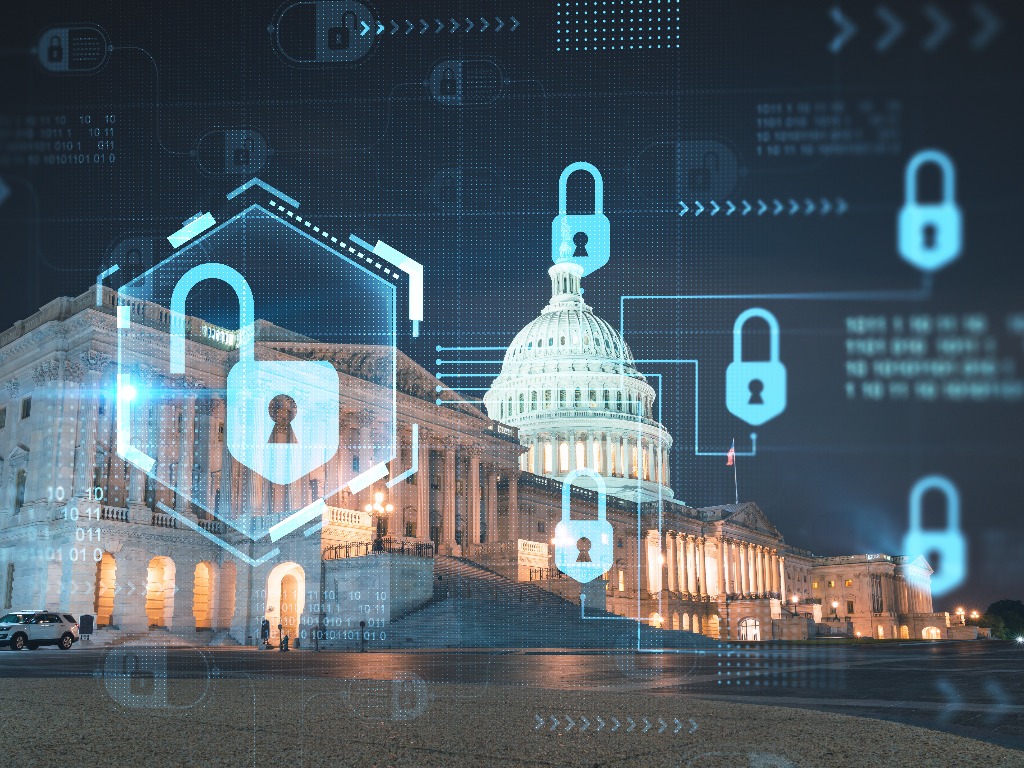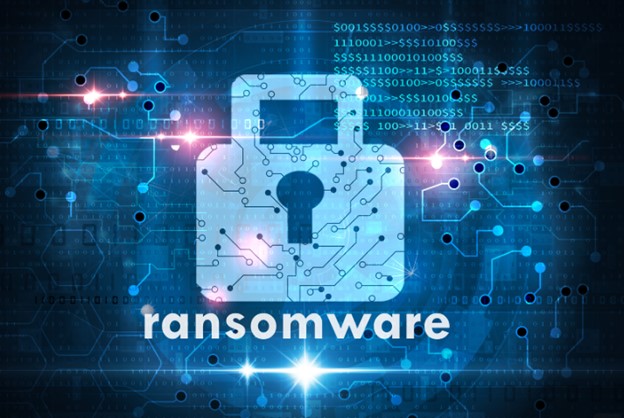Cybersecurity: What to Know, and What Questions To Ask
As a City Administrator or Manager, you are already responsible for so much, and there is a good chance that the risks and complexities of cybersecurity might feel intimidating.
Maybe we can help reduce some of those concerns!
The harsh reality Is that cyber-threats are around every corner, and the potential consequences of a breach for your city could be devastating.
In this article, we’ve distilled cybersecurity essentials into a clear and quick guide to help you understand what to look for.
By the time you’ve finished reading, you’ll be able to walk into your next meeting with your IT team armed with the right questions to ask and the confidence to make informed decisions that protect your city’s digital assets.
So, let’s dive into the key areas of cybersecurity that you, as a City Administrator or Manager, need to be aware of.
Step 1: Begin by assessing your current cybersecurity status
Tackling cybersecurity starts with understanding where you currently stand. This means evaluating your city’s existing cybersecurity measures, strengths, and weaknesses.
And we are asking the right people, the right questions.
You might be thinking, “How do I even begin to assess our cybersecurity situation?” The good news is that it’s simpler than it may seem. You can gain valuable insights into your current city’s cybersecurity posture by breaking it down into manageable steps.
First, take a moment to identify your city’s critical digital assets and infrastructure. These are the systems and information that, if compromised, would cause significant harm to your city’s operations, reputation, or finances. Examples could include sensitive citizen data, financial systems, or emergency response networks.
Next, consider the measures already in place to protect these assets. Are they up-to-date, and do they follow industry best practices? Don’t worry if you’re not a cybersecurity expert – that’s what your IT team is for. They can help determine how well your city adheres to the necessary standards.
Finally, think about your city’s response plan during a cyber incident. Is there a clear procedure for identifying, containing, and addressing a potential breach? And, just as importantly, is this plan regularly reviewed and updated to ensure it remains effective?
Step 2: Recognizing the Threat Landscape
To make informed decisions about cybersecurity, City Administrators and Managers must first understand the variety of cyber threats that can target their city’s IT infrastructure.

From ransomware and phishing attacks to DDOS assaults and insider threats, staying informed about the ever-evolving threat landscape is essential for effective risk management.
It’s crucial to understand that the world of cybersecurity is ever-evolving. Cyber threats targeting cities and counties have become increasingly sophisticated, making it essential to stay informed about the risks and how to address them effectively.
Let’s break it down into three key areas that you should be aware of:
1. Phishing and Social Engineering Attacks: These attacks prey on human vulnerabilities by tricking people into clicking malicious links or sharing sensitive information. Often, cybercriminals impersonate trusted individuals or organizations to deceive their targets.
2, Ransomware Attacks: Ransomware is malicious software that encrypts a victim’s files and demands payment for the decryption key. Cities and counties have become popular targets for ransomware attacks due to their reliance on essential services and the urgency to restore operations.
3. Third-Party Vendor Risks: Your city’s digital security is only as strong as its weakest link, and that could be a third-party vendor with inadequate cybersecurity measures. Ensuring that all vendors follow strict security protocols is essential to minimize the risk of a cyber-attack through their systems.
Recognizing the threat landscape makes you better equipped to make informed decisions and allocate resources effectively to protect your city’s digital infrastructure.
3. Creating Effective Cybersecurity Policies and Procedures
Establishing and maintaining strong cybersecurity policies and procedures is crucial for securing your city’s digital environment.

These guidelines serve as a roadmap for your staff, helping them navigate the complex world of cybersecurity and ensuring that your city remains protected from cyber threats.
So, how can you develop and sustain effective cybersecurity policies and procedures?
Here are a few key steps to consider:
1. Start with a Comprehensive Assessment:
Before diving into crafting your policies, evaluating your city’s current cybersecurity landscape is essential. Identify potential vulnerabilities and areas for improvement, so you can tailor your guidelines to address these specific concerns.
2. Collaborate with Key Stakeholders:
Cybersecurity is a shared responsibility, so involve representatives from various departments when developing your policies. This collaborative approach ensures that your guidelines are practical and applicable across the organization.
3. Keep It Simple and Clear:
All staff members should easily understand your cybersecurity policies and procedures, regardless of their technical expertise. Use plain language and avoid jargon to ensure everyone can follow and implement these guidelines.
4. Stay Current with Industry Best Practices:
Cybersecurity is an ever-evolving field, and staying informed about the latest trends and best practices is essential. In addition, regularly review and update your policies to ensure they remain relevant and effective against emerging threats.
5. Encourage Employee Buy-In:
To make your cybersecurity policies and procedures truly effective, fostering a sense of ownership and accountability among your staff is vital. Regular training sessions and open communication channels can help create a culture of cybersecurity awareness.
By developing and maintaining robust cybersecurity policies and procedures, you’re proactively safeguarding your city’s digital environment.
4. Cultivating a Cybersecurity-Conscious Workforce
As a City Administrator or Manager, one of your key responsibilities is to foster a culture of cybersecurity awareness among your employees.

A well-informed staff can serve as the first line of defense against cyber threats, significantly reducing the risk of security incidents and helping to keep your city’s digital assets safe.
But how can you create an environment where cybersecurity is a top priority for every team member?
Here are some practical steps to help you build a cybersecurity-conscious workforce:
1. Lead by Example:
Demonstrate your commitment to cybersecurity by actively participating in training sessions and emphasizing its importance in team meetings. When employees see leadership taking cybersecurity seriously, they’re more likely to follow suit.
2. Offer Engaging Training Opportunities:
Use real-world examples, interactive exercises, and relatable scenarios to make cybersecurity training enjoyable and relevant.
3. Implement a Continuous Learning Approach:
 Cyber threats are constantly evolving, and so should your cybersecurity training. Schedule regular training sessions and updates to inform your staff about the latest risks.
Cyber threats are constantly evolving, and so should your cybersecurity training. Schedule regular training sessions and updates to inform your staff about the latest risks.
4. Encourage Open Communication:
Create an atmosphere where employees feel comfortable discussing cybersecurity concerns and asking questions. Establishing open lines of communication can help identify potential vulnerabilities and foster a sense of shared responsibility for cybersecurity.
5. Recognize and Reward Positive Behavior:
Celebrate employees who demonstrate exceptional cybersecurity awareness or who contribute to enhancing your city’s security posture. Acknowledging their efforts can boost morale and inspire others to follow their lead.
6. Incorporate Cybersecurity into Your City’s Core Values:
Make cybersecurity integral to your city’s mission and values. By positioning it as a central component of your organization’s culture, you’ll help reinforce its importance among employees at all levels.
By nurturing a culture of cybersecurity awareness among your staff, you’re empowering them to act as guardians of your city’s digital assets.
5. Creating A Robust Access Control and Authentication

Implementing strong access control and authentication measures is crucial in safeguarding your city’s digital assets. Controlling who has access to sensitive information and systems can significantly reduce the risk of unauthorized access and potential data breaches.
Here are some key strategies to bolster access control and authentication in your city:
- Embrace the Principle of Least Privilege:
Grant employees access only to the information and systems necessary for their job functions. This approach minimizes the potential damage from compromised accounts or insider threats.
- Implement Multi-Factor Authentication (MFA):
Strengthen your authentication process by requiring users to provide two or more forms of identification, such as a password and a one-time code sent to their mobile device. MFA adds an extra layer of protection against unauthorized access.
- Regularly Review and Update Access Permissions:
Conduct periodic audits of user access permissions to ensure they remain appropriate for each employee’s role. Be sure to promptly revoke access for employees who no longer require it, such as those who have changed roles or left the organization.
- Educate Employees on Password Best Practices:
Encourage staff to create strong, unique passwords for each account and update them regularly. In addition, remind them not to share passwords with others or write them down in easily accessible locations.
You’re taking essential steps toward bolstering your city’s cybersecurity defenses by prioritizing access control and authentication.
6. Protecting Your City’s Data and Upholding Privacy Standards
 As a City Administrator or Manager, you’re responsible for ensuring that your city’s data is secure and that privacy regulations are being followed. Data breaches and privacy violations can have severe legal and financial consequences, so it’s crucial to prioritize these aspects of cybersecurity.
As a City Administrator or Manager, you’re responsible for ensuring that your city’s data is secure and that privacy regulations are being followed. Data breaches and privacy violations can have severe legal and financial consequences, so it’s crucial to prioritize these aspects of cybersecurity.
First and foremost, familiarize yourself with the relevant data protection laws and privacy regulations that impact your city. This may include federal regulations like HIPAA or GDPR, as well as any state or local privacy mandates.
Next, work closely with your IT team to implement robust data protection measures. This may involve encrypting sensitive data, setting up firewalls, and regularly monitoring for unauthorized access.
Finally, educate your staff on the importance of data protection and privacy. This can include training on secure data handling practices and fostering a culture of accountability and vigilance.
By taking a proactive approach to data protection and privacy compliance, you can safeguard your city’s valuable information and uphold the trust of your residents.
7. If the Unthinkable Happens: Crafting a Solid Incident Response Plan
 As a City Administrator or Manager, preparing for the unexpected is essential.
As a City Administrator or Manager, preparing for the unexpected is essential.
Cybersecurity incidents can strike at any time, and having a well-crafted incident response plan can minimize the damage and get your city back on track.
Start by forming a dedicated incident response team with representatives from key departments, such as IT, legal, communications, and human resources. This team should create, maintain, and execute the incident response plan when needed.
Next, identify the potential risks and threats that your city may face, and develop specific action plans to address each scenario. This can include isolating affected systems, identifying the root cause, and notifying the appropriate parties.
It’s crucial to establish clear lines of communication within your organization and with external partners, such as law enforcement and other government agencies. Make sure everyone knows their roles and responsibilities in the event of a cyber incident.
Finally, remember to review and update your incident response plan regularly. Conduct periodic drills and simulations to ensure your team is well-prepared for any cybersecurity challenges that may come your way.
Conclusion
Cybersecurity is no longer a luxury but a necessity for City Administrators and Managers.
By assessing the current cybersecurity status, understanding the threat landscape, establishing a strong governance structure, crafting policies and procedures, cultivating a cybersecurity-conscious workforce, implementing robust access control and authentication, protecting data and privacy, and preparing for the unexpected with an incident response plan, city leaders can effectively navigate the digital minefield.
As technology advances and cyber threats become more sophisticated, city administrators must stay vigilant, adapt to new challenges, and invest in protecting their city’s digital assets.
Doing so will ensure your communities’ safety and resilience in an increasingly interconnected world.
Next Steps:
If you would like to do a cybersecurity assessment, please reach out and we will connect you with Collin, and answer all of your questions
If you want to learn more about our cybersecurity solutions, check out this page:





